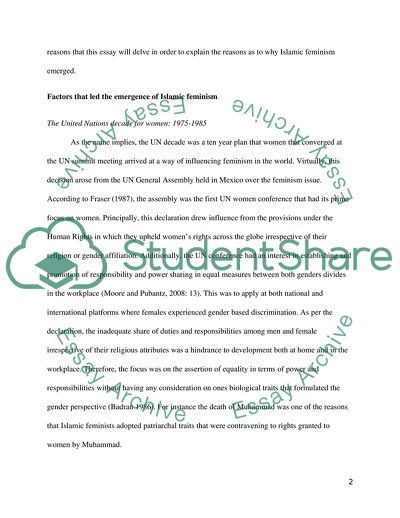Cite this document
(Factors that Led to the Reemergence of Islamic Feminism Essay Example | Topics and Well Written Essays - 3750 words - 1, n.d.)
Factors that Led to the Reemergence of Islamic Feminism Essay Example | Topics and Well Written Essays - 3750 words - 1. https://studentshare.org/religion-and-theology/1801160-discuss-critically-the-main-factors-that-contributed-to-the-emergence-of-islamic-feminism
Factors that Led to the Reemergence of Islamic Feminism Essay Example | Topics and Well Written Essays - 3750 words - 1. https://studentshare.org/religion-and-theology/1801160-discuss-critically-the-main-factors-that-contributed-to-the-emergence-of-islamic-feminism
(Factors That Led to the Reemergence of Islamic Feminism Essay Example | Topics and Well Written Essays - 3750 Words - 1)
Factors That Led to the Reemergence of Islamic Feminism Essay Example | Topics and Well Written Essays - 3750 Words - 1. https://studentshare.org/religion-and-theology/1801160-discuss-critically-the-main-factors-that-contributed-to-the-emergence-of-islamic-feminism.
Factors That Led to the Reemergence of Islamic Feminism Essay Example | Topics and Well Written Essays - 3750 Words - 1. https://studentshare.org/religion-and-theology/1801160-discuss-critically-the-main-factors-that-contributed-to-the-emergence-of-islamic-feminism.
“Factors That Led to the Reemergence of Islamic Feminism Essay Example | Topics and Well Written Essays - 3750 Words - 1”. https://studentshare.org/religion-and-theology/1801160-discuss-critically-the-main-factors-that-contributed-to-the-emergence-of-islamic-feminism.


